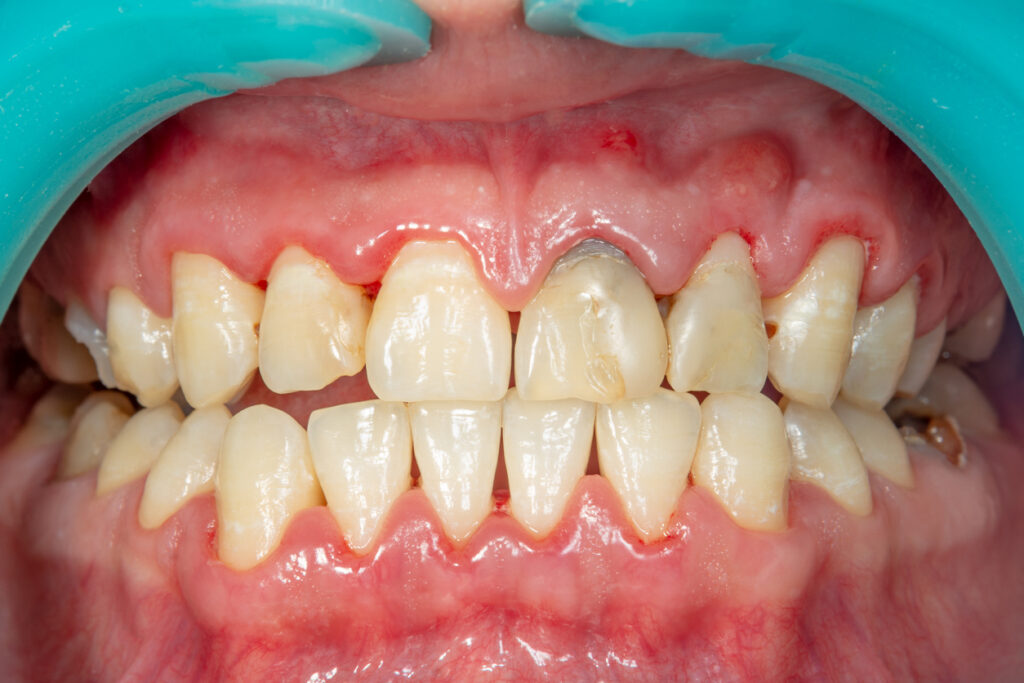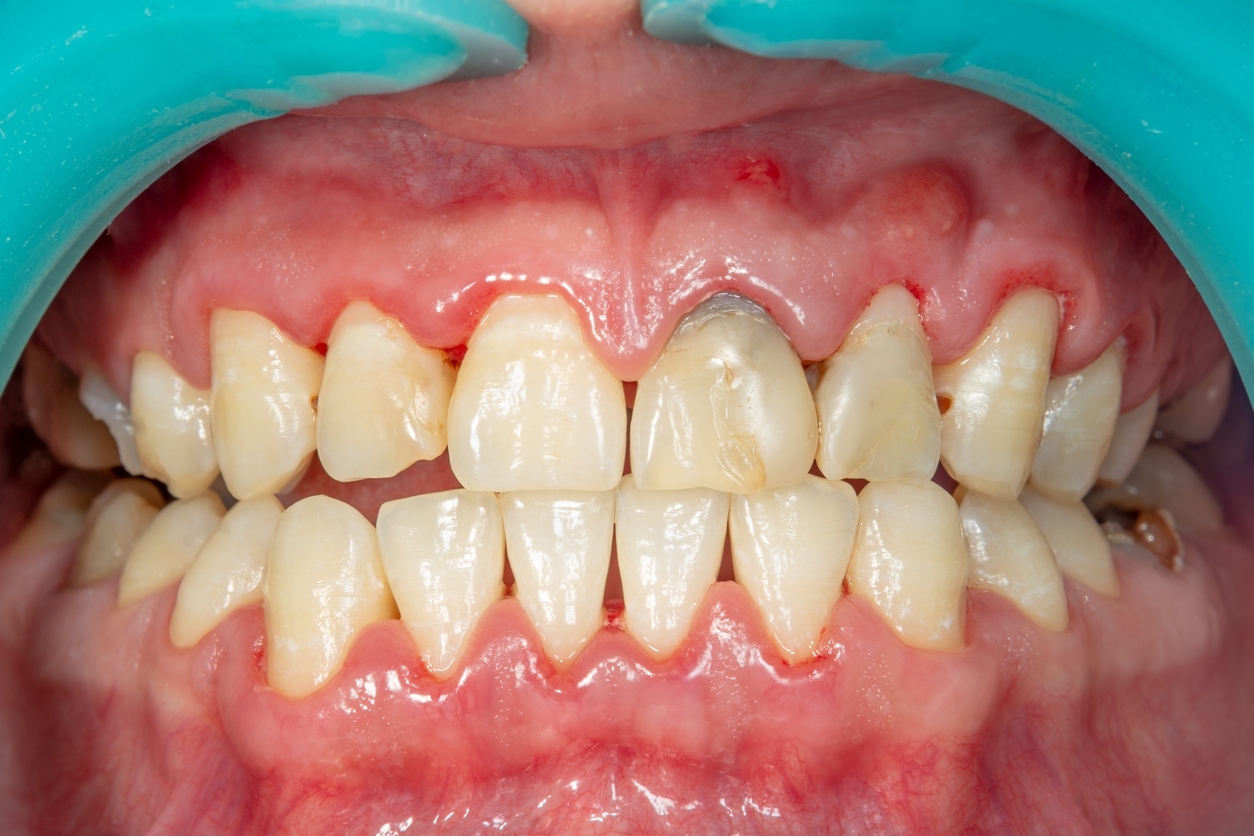As we wrapped up National Dental Hygiene Month in October, it seemed fitting to follow up with information about the different stages of gum disease. As you read this you may hear your hygienist’s voice!

We take measurements of your gums at least every 12 months to aid in determining what stage of health your gums and bone are at. This is part of the periodontal assessment which includes but is not limited to: pocket depths, bleeding, recession, root furcation involvement, and mobility. This tool along with your annual x-rays helps us decide what treatment will be best for you.

Inflamed bleeding gums are indicative of disease.
Healthy Gums:
Gum tissue is pink and firm, with no bleeding present and 2-3mm gum pockets. The teeth are firmly supported by the surrounding gums and bone.
Gingivitis:
Pockets are slightly deeper, usually 4mm. An accumulation of bacteria known as Gingivitis is the start of deeper pockets. Gums become visibly swollen and usually bleed easily with brushing and flossing.
At this early stage, the inflammation is reversible as it is limited to the gum tissue. When the bacteria is not disrupted and the plaque removed, gingivitis will then progress to gum disease.
Gingivitis has progressed to Periodontitis
• Early Periodontitis: The inflammation in the gums progresses and the gums start to pull away from the teeth forming pockets that further trap plaque, where bacteria and food sit leading to infection in the gums. The bacterial toxins as well as the body’s own immune response will begin the process of bone loss.
• Moderate Periodontitis: As the infection progresses, inflammation will become more pronounced and the bleeding will be more severe. You may begin to experience discomfort as further damage is done to the bone and gums continue to recede.
• Advanced Periodontitis: As your gum disease worsens, pockets will deepen and periodontal abscesses will begin to form. When this happens it will cause pain and a foul taste. Enough bone has been lost at this point for the teeth to be significantly mobile and have a poor prognosis.
Tooth Loss among Adults
Gum disease is the most common cause of tooth loss among adults, but the good news it can be prevented with good oral hygiene. If you’re beyond the prevention stage and have already been diagnosed with gum disease, don’t worry!
If caught early and with proper therapy, gum disease can be treated and the progression significantly slowed. Our hygienists are highly trained professionals who pride themselves on their care for patients, so regardless of your state of gum health, we will work with you toward a healthier mouth!
References
American Academy of Periodontology: https://www.perio.org/consumer/types-gum-disease.html
Colgate: https://www.colgateprofessional.com.au/education/patient-education/topics/plaque-and-gingivitis/stages-of-gum-disease
Marlborough Associates: https://www.marlboroughdentistry.com/patient-info/stages-periodontal-disease/
Faster, better, and more comfortable care is available at Dental Care Of Sumner. We truly live up to our name with an office packed full of advanced technology and a team who is helping move dentistry into the 21st century.
